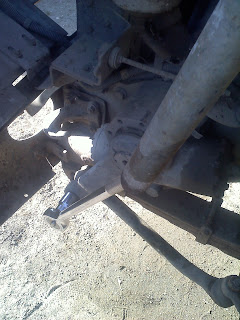This week in class we cut open a few oil filters to see what they looked like inside. So I decided that I was gonna take apart a few of my own. I had two old oil filters from my car laying around so I cut them open. One filter was a fram filter and the other was a napa filter. I was very interesting to see the differences of what the filters look like inside of them and how they are made. I think that for my next oil change I am going to get a filter from Honda so I can cut it open to compare what it looks like next to one of the other filters.
This is the napa filter. It has metal end caps and is a non bypass filter. I didn't find anything wrong with the filter media and no shiny metal pieces so that's good
This is the fram filter. It has a gasket material for the end caps and is a bypass filter. It uses a metal clip, instead of glue, to hold the filter media together. It is slightly longer than the napa filter.
The bottom of the napa filter on the left and the fram on the right. I am not sure that I like how the fram filter is a bypass filter.
This week = 30, total = 284












